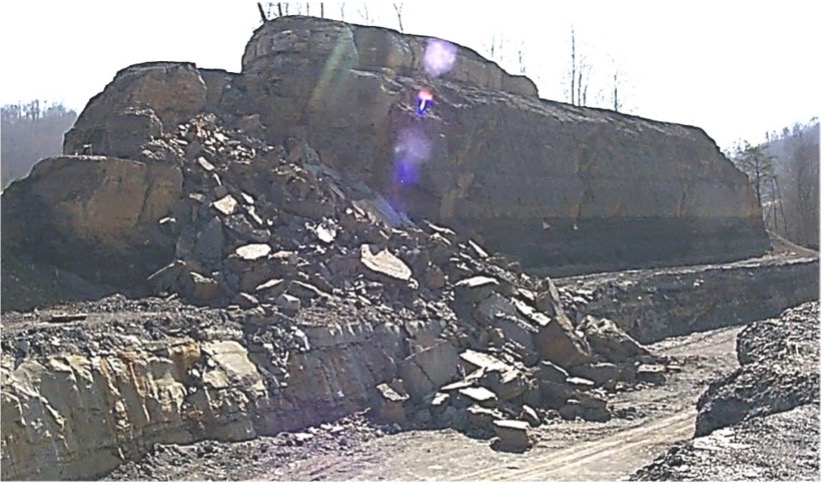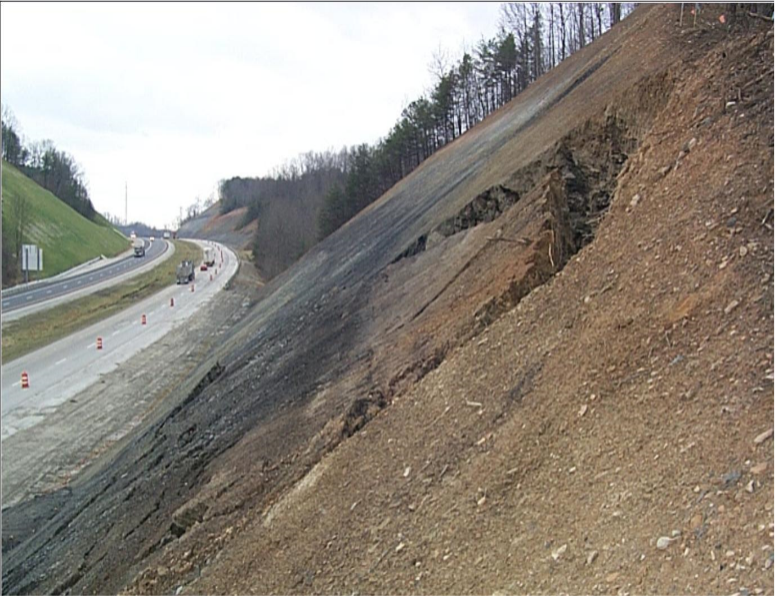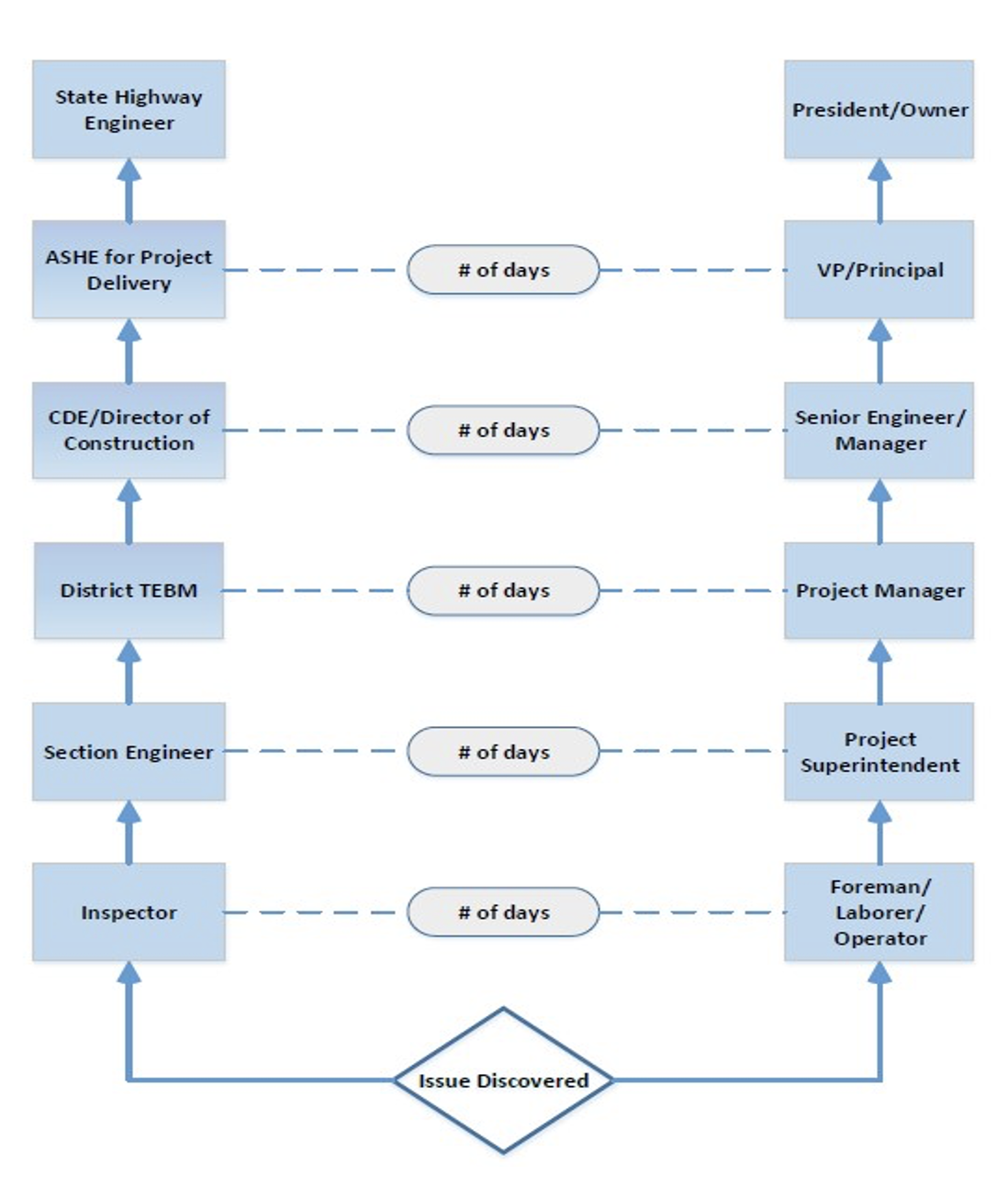Search for articles or browse our knowledge portal by topic.
Resolving Discrepancies On Construction Projects
When section engineers (SEs) administer construction projects, they encounter and must resolve multiple discrepancies. A discrepancy is an issue that results in a disagreement between the SE and contractor on how the contract is executed. Examples include different interpretations of contract requirements, plan errors, encountering site conditions different than shown on plans, and acceptable quality of work performed. Some discrepancies are minor and easily resolved. Major issues can arise as well. These typically involve the SE and contractor disagreeing on the work to be performed, acceptability of work that has been performed, and the contract’s compensation arrangement. Discrepancies must be dealt with immediately and possible resolutions investigated as soon as practical. Unresolved discrepancies may increase costs, result in delays, and ultimately lead to a breakdown in communication between the Section Office and contractor.
Regardless of magnitude, the SE and contractor must work jointly to resolve discrepancies before the situation escalates to a claim. When the contractor and SE cannot resolve a discrepancy, the contractor has the option of filing a claim. Filing a claim is a formal process through which the contractor seeks to revolve an issue and is administered through Section 105.13 of KYTC’s Standard Specifications. However, a claim should be treated as the option of last resort.
This article reviews the following topics:
- Types of discrepancies encountered on construction projects and their potential impacts
- Proper methods for documenting project activities, recording discrepancies, and quantifying discrepancies
- Guidelines for effective project-level communication
- Strategies that SEs and project inspectors can deploy to resolve discrepancies and effectively administer construction projects
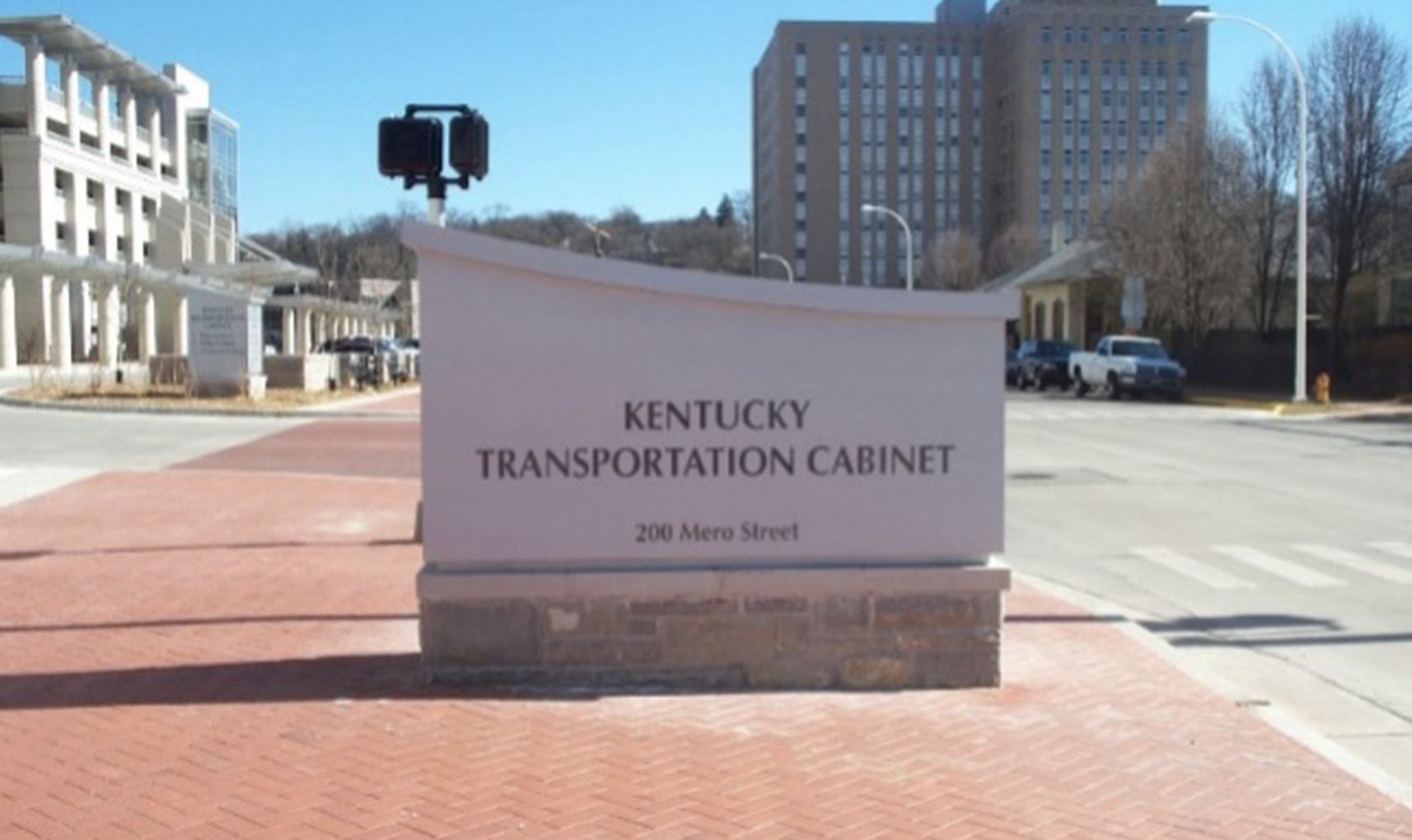
- Project Specific Contract Documents
- Standard Drawings
- KY Standard Specifications for Road and Bridge Construction
- KYTC Construction Guidance Manual
- Section Engineer’s Resource Guide
- Construction Management Academy Workbook
Inspectors encounter discrepancies ranging from minor items that require minimal project-level adjustments to major issues that demand changes to the contract documents. Table x lists discrepancies commonly found on construction projects and provides examples of each.
| Bid item quantities | •Error in plan quantities resulting in excessive overruns or under-runs |
|---|---|
| Interpretation of construction methods and tolerances | •Paving limits for entrances encountered within project |
| Definition of acceptable quality | •Concrete finish on bridge barrier walls and abutment walls |
| Personality conflicts within the Project Team | •Lack of effective communication between the project inspector and contractor superintendent |
| Contract time | •Overall project time •Individual work item time limits •Special time restrictions (e.g., weather, traffic, special notes) |
| Interpretation of contract documents | •Specifications •Plans •Proposal notes •Methods – Installation & Measurement |
| Changed conditions | •Difference between actual solid rock elevation that shown on plans for bridge footers |
| Subcontractor roles and responsibilities | •Subcontractor fails to meet work schedule submitted by prime contractor |
| Payment for completed work | •Contractor and SE disagree on what work items are incidental (included) within a pay item |
At the preconstruction conference KYTC representatives, the contractor, and other stakeholders must establish a relationship built upon open and honest communication. An effective preconstruction conference helps to set a positive tone from the project’s outset and results in all parties committing to resolve discrepancies and other issues promptly. This conference can also be used to specify the frequency and types of future project meetings (e.g., pre-pave meetings, pre-pour meetings, progress meetings, informal partnering).
Before the conference, the SE should:
- Thoroughly review the plans, special provisions, and special notes to understand their impacts on contract administration
- Perform a field inspection of the project to become well acquainted with requirements and existing conditions
Completing these tasks helps the SE determine who should attend the conference and what topics should be covered.
Section 1.09.6 of the Construction Guidance Manual provides information on planning and executing a preconstruction conference. SEs can use TC 63-64 (Pre-Construction Conference Checklist) as a quick reference. In addition to covering topics described in these materials, the preconstruction conference must explicitly address methods for handling discrepancies. On less complex projects, it can be sufficient to confront issues when they materialize. More complex projects may require a formal issue resolution and documentation process. Regardless of the method chosen, discrepancies must be tackled promptly. Discrepancies are never resolved by simply ignoring them.
SEs must keep project documentation accurate, well-organized, and up to date. This requires spending the necessary time to thoroughly understand procedures for maintaining project files in proper order. Project documentation should be easy to locate as it is critical for resolving disputes, responding to audits, and replying to open records requests.
Daily Work Report & Project Diary
At the project level, the Daily Work Report (DWR) and the AASHTOWare Project Diary (Diary) are the most important forms of documentation. The project inspector(s) produces the DWR(s), while the SE generates a diary entry for each day an item of work is recorded in a DWR, for all contract types. A Diary entry is also created each day (including weekends and holidays) to record whether a day of work was charged for Working Day Contracts. The DWR and the Diary must contain only factual data and should be kept up to date and complete. Their accuracy and completeness impacts the settlement of claims, liquidated damages, liability claims, and disputed quantities.
The SE should review each inspector’s DWR and record information in the Diary related to disputed work items, delays, plan discrepancies, and where Cabinet personnel and contractor opinions differ. Particular emphasis must be placed on recording information that might have a bearing on claims and disputes, either existing or anticipated. While these documents are instrumental for settling claims, accurate documentation is equally useful for resolving issues and eliminating the need to file a claim.
When a discrepancy escalates toward a claim, DWRs and Diary entries should be compared against the contractor’s records to determine (1) when the discrepancy was discovered and (2) the course of action decided upon to resolve the issue. Referencing these documents and reconciling them with contractor records often helps resolve the discrepancy at the project level.
The SE and contractor should make every effort to resolve discrepancies jointly (i.e., at the project level). Doing so prevents them from being elevated to a district office or the Central Office. This is only possible if all parties at the project level commit to open, continuous, and honest communication. The SE or lead inspector and onsite contractor personnel must routinely communicate about the project schedule, availability of necessary staffing, and potential issues during project construction. Good communication can ward off surprises, which are rarely good on a construction project.
The contractor must provide, per Section 108.02 of the Standard Specifications, a written narrative schedule (TC 63-50, Written Narrative Schedule) before project work begins. The SE or lead inspector must ensure that this document accurately reflects work that will be performed on the project and request regular updates when the work performed differs from what was proposed. A good starting point for discussions at regularly scheduled project site meetings is a review of the written narrative.
Project type and level of complexity should dictate the format, frequency, and method of routine project site meetings. Regardless of the format or method chosen (e.g., “hood of the truck” meetings, formal meetings in an office setting) what matters most is that stakeholders communicate with each other continuously. The purpose of meetings is to provide a regular time for discussing upcoming work and potential issues.
Although email can efficiently relay information, it cannot substitute for in-person meetings. Face-to-face interactions are especially important when delivering news that may not be received well. The SE or project inspector should not rely on email as the primary mode of communication with the contractor. Sometimes the tone of emails is misconstrued, which can damage the relationship between KYTC and its partners. Verbal communication should proceed and follow an email, especially concerning a potential discrepancy. In-person meetings remove barriers to effective communication.
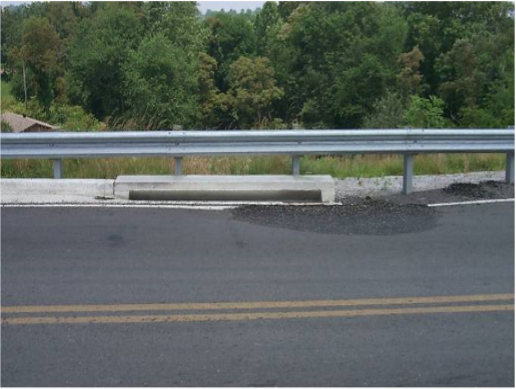
Answering questions and resolving discrepancies quickly are major challenges when managing a construction project. If questions are not answered or problems linger over an extended period, others may interpret this as KYTC purposely avoiding or lacking the necessary experience to make decisions. Failure to quickly resolve discrepancies diminishes trust at the project level. In construction time is a critical factor, and when questions or issues are not resolved quickly there are associated costs.
Adopting an issue resolution ladder that is mutually agreed to by KYTC and its contractors is a sound method for resolving questions or problems. The ladder specifies a timeline and procedure for settling common questions or problems. When a problem arises, there is a fixed amount of time in which to resolve it at a given personnel level. If the problem is not resolved within the specified time period, it is escalated to the next personnel level for consideration. Using this tool keeps decision making on track and prevents small, festering issues from becoming larger, more cumbersome ones. The issue escalation ladder is not an alternative to nor a tool to be used with the claims process.
Figure 1 provides a template for an issue escalation ladder. The timelines captured on this template should be amended for individual projects. Project stakeholders must agree to the structure of the issue escalation ladder at the preconstruction conference or the beginning of a project. The ladder in Figure x is very formal and is likely appropriate for only larger and highly complex projects. For simpler projects where the SE and Contractor have a good history of working together, the issue escalation ladder may be a simple agreement formalized at the preconstruction conference. Ladders should be customized to individual projects. SEs and contractors must agree to escalate issues in a timely manner.
Issues and questions must be documented as they emerge on a project. DWRs have been the primary medium for documenting these items. However, because contractors generally do not have access to DWRs in real time, they may harbor concerns and uncertainties over whether progress is being made to resolve issues. Project stakeholders may be unsure about who is responsible for taking action and the timeline for a response.
The issue documentation matrix is a project-specific form that documents communications between KYTC and a contractor on potential discrepancies. It records the status of an issue — whether it is moving toward a resolution or if progress has stalled and the problem warrants advancement on the issue escalation ladder. Figure 2 is a template for a basic issue documentation matrix. Like the issue escalation ladder, the format and complexity of this document should be project specific.



